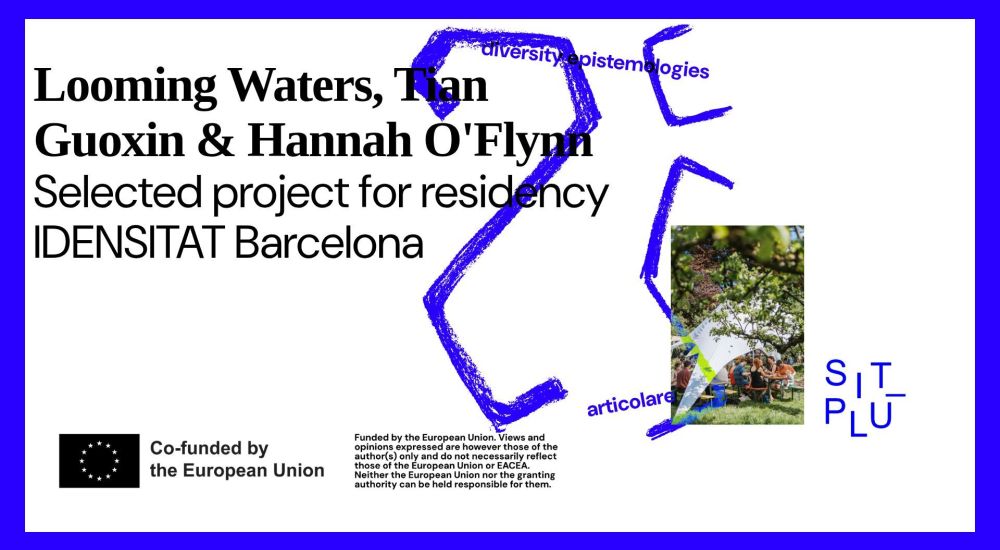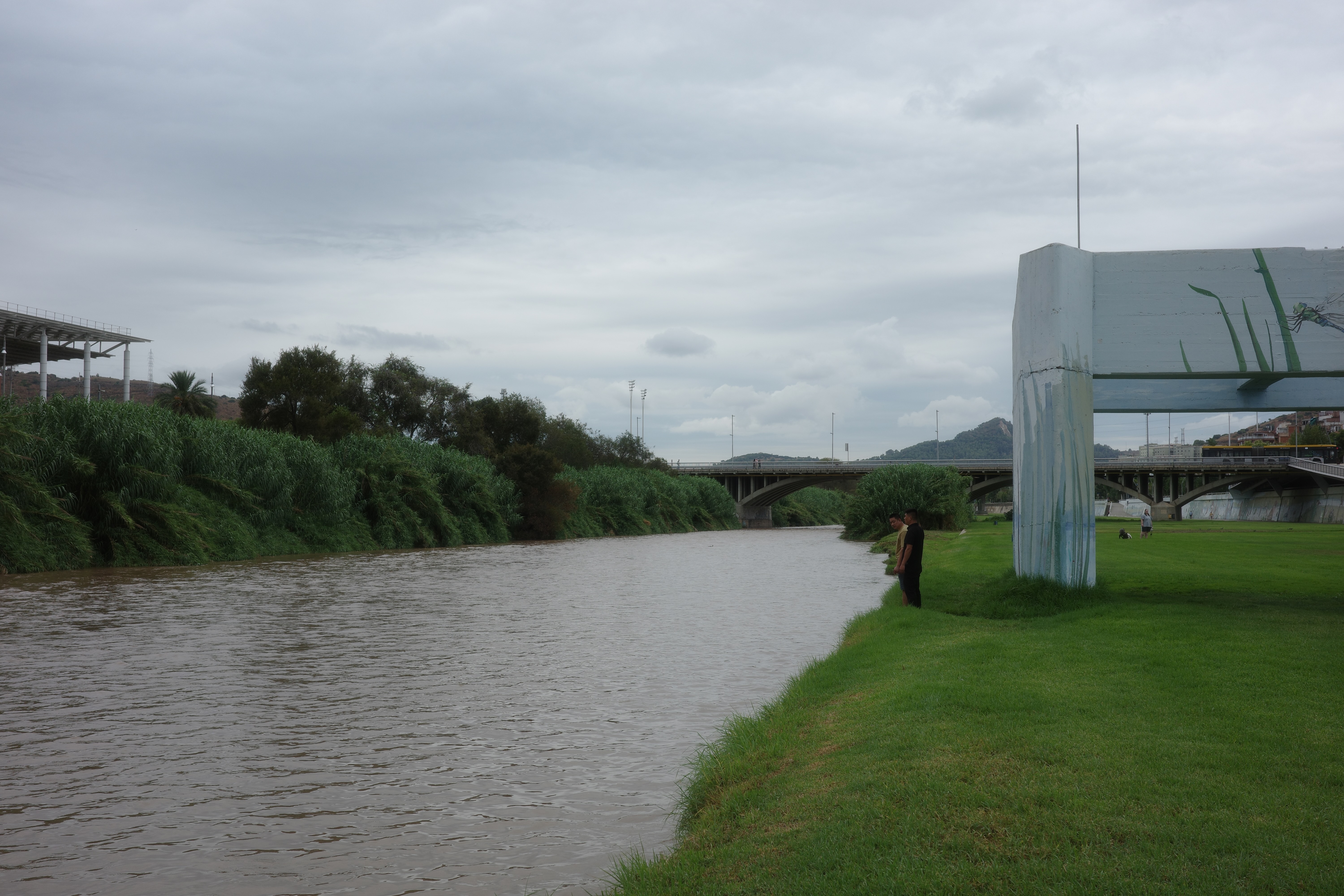
Situated Creative Practices for the Pluriverse (SIT-PLU)
LUCA School of Arts (BE), Floating University (DE), ZEMOS98 (ES), Idensitat (ES), Lungomare (IT), Baltan Laboratories (NL), EINA (ES), Universitat Politècnica de València (ES)
Situated Creative Practices for the Pluriverse (SIT-PLU) is a Creative Europe Cooperation project tackling socio-ecological challenges through cross-disciplinary research and context-specific artistic interventions. Drawing on the Zapatista concept of the pluriverse—"a world where many worlds fit"—the project embraces diverse ways of knowing and living, foregrounding buen vivir (social well-being), communal interdependence, and the relationships between human and more-than-human entities.
- ABOUT SIT PLU
- SIT-RES 2026 OPEN CALL
- SACRIFICE ZONE - SIT-RES 2026 OPEN CALL (IDENSITAT)
- SELECTED PROJECT - SIT RES 2026
SIT-PLU stems from acknowledging that we cannot address contemporary crises using the same categories that originated them. Arts and culture can be significant triggers for contributing to new perspectives emerging and taking hold, but, for doing so, a particular approach should be explored: one in which creative practitioners (and researchers) take on ‘situated’ approaches.
SIT-PLU website: https://sitplu.substack.com/
The project includes a program of residencies (SIT-RES) happening in 2026 and 2027, where artists and creative practitioners selected through this open call will be invited to engage with a specific context (social, geographical, historical) for one year and develop new forms of creative intervention/cultural mediation.
SELECTED PROJECT - SIT RES 2026
Looming Waters by Tian Guoxin and Hannah O’Flynn
The project’s artists will undertake a one year artistic research on the multiple textile histories woven through the Besòs river and its surrounding neighbourhoods.
Catalunya began its industrialisation in the 1830s, led by a textile industry fuelled by the new
implementation of the steam engine. These new factories were sustained through huge amounts of imported Asturian and British coal, American cotton farmed using African slave labour, as well as big waves of national migrant labour. In the 1970s, the Catalan textile industry started collapsing due to the 1973 oil shock and the competition with other industries with either cheaper labour or intensified productivity.
Like many other rivers across Catalunya, the Besòs river would also have textile industrial colonies develop on its banks. Santa Coloma de Gramanet, on the eastern bank of the Besòs, would become one of these textile production centres. In the 1990s, there was a wave of Chinese migration to Barcelona, the majority coming from Zhejiang province. A lot of the then-abandoned textile machinery in Sta. Coloma was bought up by the newly arrived migrants, who set up workshops in disused mill houses. As Chinese textile workshops grew in number in the area, the neighbourhoods around the Besòs housed the Chinese community, who concentrated not only in Sta. Coloma, but also in St. Andreu and Sagrera.
For this project Tian and O’Flynn will create a series of intersecting living archives of the different textile histories which weave through the waters of the river Besòs. By “living archives” artists mean different collections of historical materials of the river, its waters, and the people and multiple other species who live(d) around and within it. Looming Waters will be divided into three chapters, each tracing different histories of the river: a first chapter on the Chinese community living in Fondo, a second on the Sta. Coloma women textile workers, and a third on the intersections of water pollution, biodiversity, ecological planning, and gentrification.
Bio
Tian Guoxin is an artist born in Sichuan, China, and lives and works in Berlin. Her multidisciplinary practice includes multimedia installation, sculpture, and video. In it, she focuses on infrastructural critique, particularly the violence of resource extraction. She is an associate artist at with the rubbles of old palaces, Berlin. She recently exhibited at the n.t.w. Beijing; KW, Berlin; with the rubbles of old palaces, Berlin; Galerie Der Künstler*Innen, Munich; and Kunsthalle Baden Baden.
Hannah O'Flynn is an artist, filmmaker, researcher, and curator from Barcelona. Her work investigates the processes of normalisation of structures of oppression and the banalisation of structural violence. In her practice she focuses her research on single everyday objects or practices and attempts to situate them as a way of mapping histories of extraction, cultural norms of oppression, global networks of capitalist and imperialist relations, and the continued practices of resistance against such systems. She is an associate artist and curator at with the rubbles of old palaces, Berlin. She has exhibited at the Noorderlicht Biennale, Groningen; with the rubbles of old palaces, Berlin; BPA//Room, Berlin; and Central Academy of Fine Arts Museum, Beijing.
SIT-PLU is a medium-scale Creative Europe cooperation project involving the following partners: LUCA School of Arts (BE), Floating University (DE), ZEMOS98 (ES), Idensitat (ES), Lungomare (IT), Baltan Laboratories (NL), EINA (ES), Universitat Politècnica de València (ES). SIT-PLU is co-funded by the European Union and Generalitat de Catalunya.
